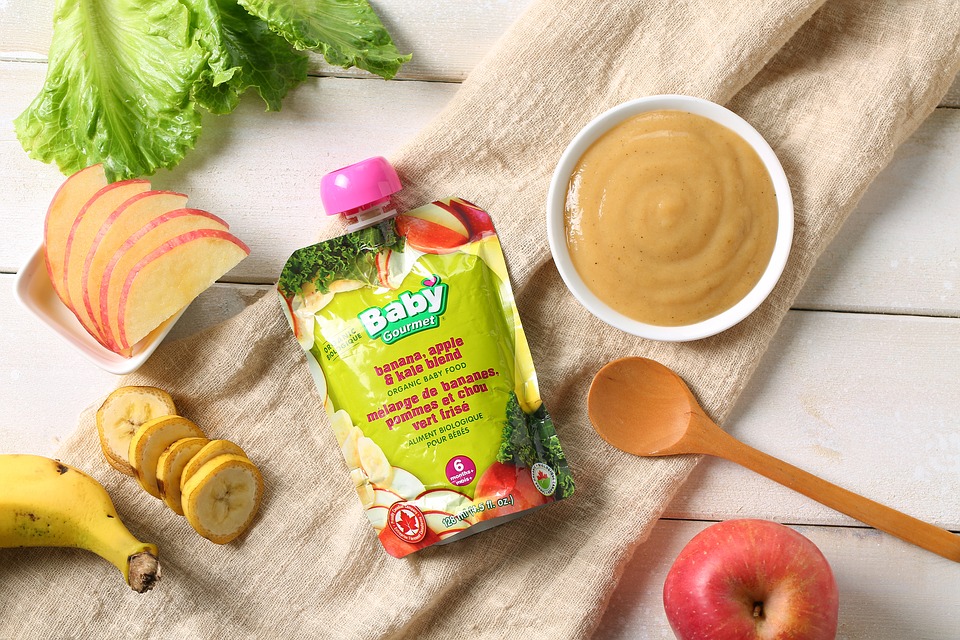As concerns about genetically modified produce and dangerous farming practices escalate, and controversy surrounding Monsanto become more common, the number of parents committed to – or at least considering the practice of – making their own baby food is also on the rise. There are also parents who would love to provide their baby with organically grown, preservative- and additive-free foods, but are under the misconception that the process is a long and laborious one. In fact, making baby food from locally or organically grown fruits and vegetables is surprisingly simple.
The Price Factor
Any parent who’s seen the expensive systems advertised for making and storing baby food at home could easily be fooled into thinking that the process is not only a difficult or time-consuming one, but also an incredibly pricey option. The truth is, those systems are only more convenient than the tools you already have in your kitchen, if that, and they are by no means necessary to create fresh, nutritious food of verifiable origins for your bundle of joy. With nothing more than a pot, a knife, a cutting board, fresh produce, and a blender, you can be on the path to becoming an in-demand chef for the smaller set. Because saving money by making healthful food for your baby rather than paying more for processed jarred food is one of the many selling points of taking on the task, spending a small fortune on an entire system with all the bells and whistles is unnecessary.
Storage
Buying a fully-stocked homemade baby food system brings a set of storage containers to the party, but there are several storage options at your disposal that will work just as well in conjunction with the blender you already have. Rather than purchasing a space-hogging, pricey system, take advantage of the variety of storage solutions available to you for a fraction of the cost.
For frozen foods, simply prepare an item in accordance with your chosen recipe, and allow it to cool. Spoon the pureed food into ice cube trays and freeze them until they’re solid, then pop the cubes out and into carefully labeled freezer bags. Foods can then be defrosted in just the amount you need, eliminating waste and allowing you to make food in large batches when you have free time, rather than scrambling to make baby food every day. Small storage bowls are widely and readily available in the market today, and are also suitable for baby food storage. Just be sure that any plastic containers you purchase are BPA free in order to avoid any potential health risks.
Tips for Making the Most Out of Your Blender
Because small batches of food tend to be pushed to the sides of a blender carafe and missed by the blades, your blender is most effective as a method of pureeing baby food when you’re working with a fairly substantial amount of food. This small drawback is eliminated, however, by setting aside an afternoon to make and freeze enough food for a few weeks. Properly stored in airtight freezer containers, your baby food will have a shelf life of up to three months.
Blenders are also great at liquefying solid foods, which means that it’s important to keep a close eye on food that’s being pureed in a blender, lest it become a very thin soup. Always use the pulse button for maximum control over the texture and consistency of the food; using even a low continuous setting could turn your perfectly prepared produce into something more akin to a juice if you’re distracted from the running blender for a moment. With children in the house, there’s constant potential for distraction, so use the pulse button and watch carefully. Remember to scrape down the sides of the blender carafe regularly as well to ensure a uniform texture with few lumps.
Immersion or Stick Blenders
Parents that are lucky enough to have an immersion or stick blender in their kitchen are in an even better position to make their own baby food with less hassle. Rather than transferring cooked food to a blender carafe to puree and then moving it to containers for storage, food can be blended in the cooking vessel and dished straight into storage containers for easy clean-up. Just be sure to avoid scraping the sides or bottom of a non-stick pot with an immersion blender that doesn’t feature housing or guards to prevent flakes of Teflon from ending up in your baby’s carefully prepared, all-natural organic baby food.
reprinted with permission



